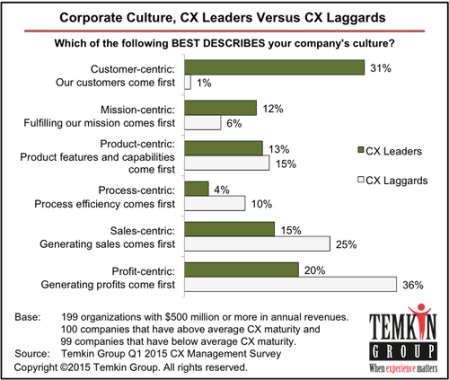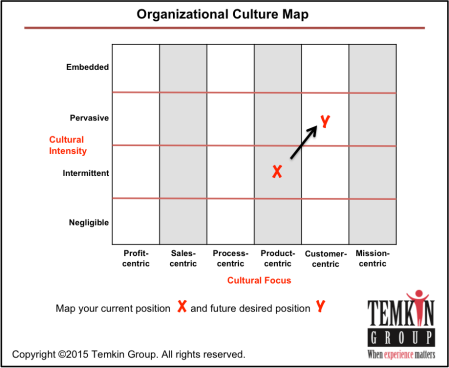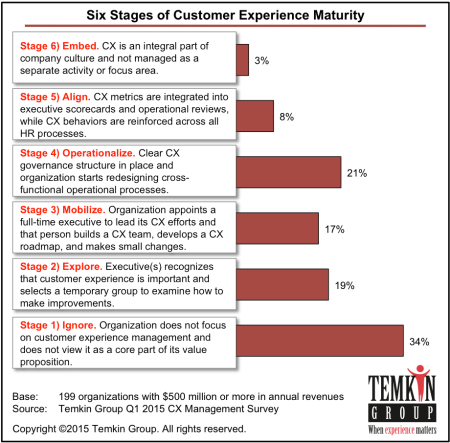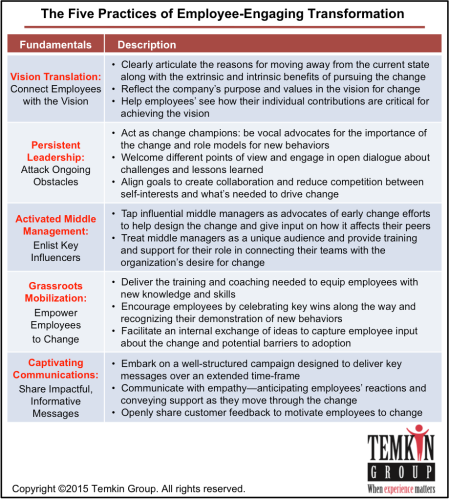Hungry for CX, Culture Eats Strategy For Lunch
October 6, 2015 Leave a comment
Management guru Peter Drucker is credited with saying that “culture eats strategy for lunch.” I agree, especially when it comes to large organizations.
Culture can make or break the success of a company, which can be a scary phenomenon for executives. While leaders tend to be comfortable around strategy discussions, they’re often painfully awkward discussing corporate culture.
Based on our work with many organizations and our research of 100’s more, here’s a primer on corporate culture that addresses six key questions.
1) What Exactly is Organizational Culture?
All of our work in this area comes down to a key reality; culture is how employees think, believe, and act.
- Think: Employees are intellectually bought-in and understand the company’s vision and why it is important to the company. What is the company communicating?
- Believe: Employees see that leaders are truly committed to what is important to the company. What are leaders demonstrating with their behaviors?
- Act. Employees adjust their behaviors to align with what is important to the company. What do employees do when no one is looking?
Companies often focus on the think level, hoping that a barrage of communications can drive culture change. Well it can’t. You need to develop plans that deal with all three levels: Think, Believe, and Act.
2) Why is Culture So Important?
The reason that culture is so important is that it frames what people (employees) do when no one is looking. You have two choices for driving employee behaviors: 1) Prescribe all of their actions and put in place mechanisms to monitor and control them, or 2) Create a culture that encourages them to act consistently with your organization’s objectives. The first approach requires an ever-growing level of resources, and is very difficult to sustain.
Our research shows that customer experience leaders have more customer-centric and mission-centric cultures.
3) What Does Culture Look Like?
Every organization’s culture is somewhat different, but we’ve found that all cultures share some common characteristics. We developed an organizational cultural map that deines two characteristics of culture:
- Cultural Focus. Every organization has one element of its efforts that, when push comes to shove, trumps all the other elements. This is the company’s cultural focus can span from being profit-centric, where generating profits comes first, to being customer-centric, where customers come first, or mission-centric, where fulfilling the company’s mission comes first, among many others.
- Cultural Intensity. To what degree do all of your employees think, believe, and act in the same way. At the low end of the intensity scale, the culture is almost non-existent as few employees share common values. At the high end of the scale, the alignment around values is almost cult-like.
4) What Are the Elements of a Customer-Centric Culture?
Our research shows that organizations with customer-centric cultures demonstrate four core competencies: Purposeful Leadership, Compelling Brand Values, Employee Engagement, and Customer Connectedness.
5) How Customer-Centric Are Organizations?
Temkin Group has identified six stages of maturity towards a customer-centric organization. We examined results from almost 200 large companies that completed our Customer Experience Competency & Maturity Assessment and found that only 11% of companies have reached the highest two levels of maturity, Align and Embed.
6) How Can You Build A More Customer-Centric Culture?
Changing culture isn’t easy, it requires a significant and comprehensive approach that focuses on affecting the behaviors of every employee. To help companies drive the change, Temkin Group introduced an approach called Employee-Engaging Transformation, (EET), which we define as, “Aligning employee attitudes and behaviors with the organization’s desire to change.”
The bottom line: CX success requires a strong appetite for culture
This post is part of the Customer Experience Professionals Association’s Blog Carnival “Celebrating Customer Experience.” It is part of a broader celebration of Customer Experience Day. Check out posts from other bloggers here. – See more at: http://cxday.org



